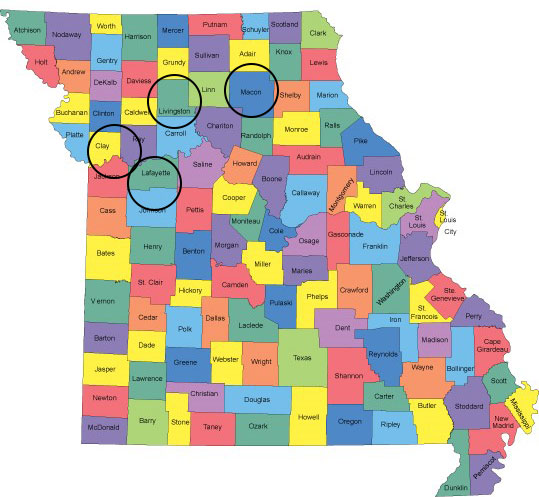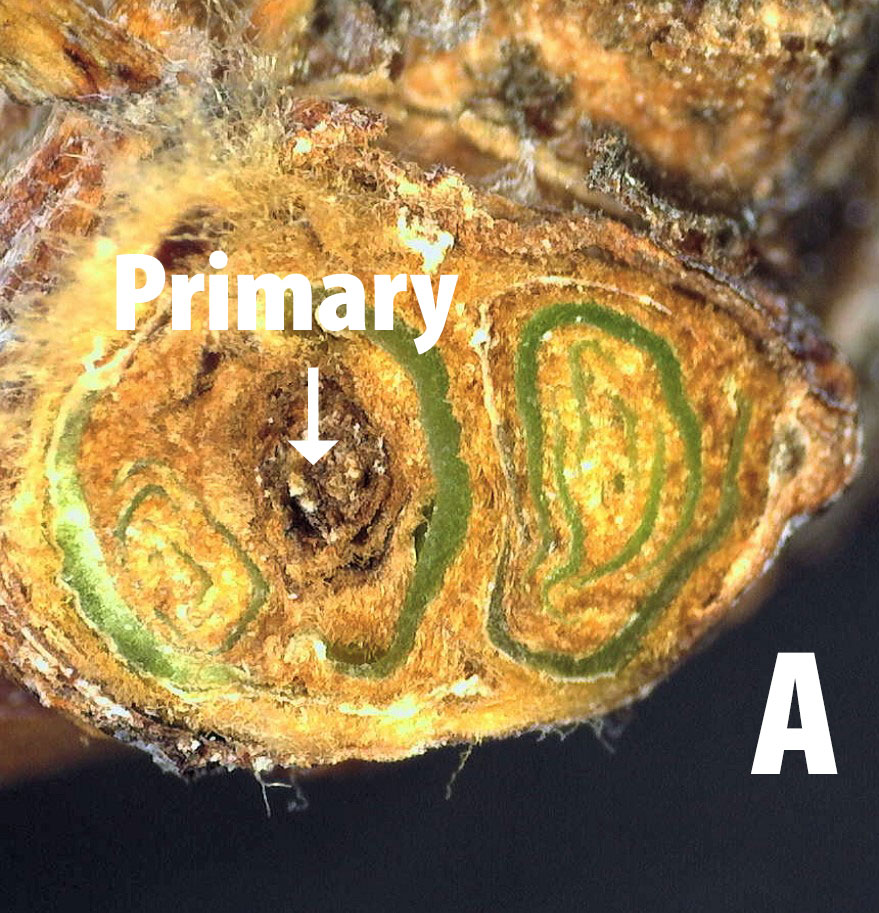Vinews
No. 1 — March 18, 2019
Contents:
Bud Mortality
Over the past week, I have evaluated a number of grape cultivars for bud mortality from North-central and Northwest Missouri. Anecdotal reports from Northeast Missouri sug-gested that bud mortality was evident. Therefore, in Northwest Missouri, grape cultivars from Clay/Ray, Lafayette and Livingston counties were evaluated. In Northcentral Missouri, grape cultivars were evaluated from Macon county.

Results
Primary bud mortality on average was 21 percent of the 18 samples evaluated (Table 1). Chambourcin and Chardonel had the greatest bud mortality. Bud mortality for Chambourcin ranged from 14 to 75 percent, with the average of 5 samples being 41 percent. Only one sample of Chardonel was evaluated, and the bud mortality was 34 percent. Bud mortality for Vignoles ranged from 8 to 23 percent, with the average bud morality being 13 percent among five samples. Three samples of Norton were evaluated and the average bud mortality was 11 percent.
Table 1. Bud mortality of grape cultivars from northwest and northcentral Missouri during the week of 18 March 2019.
| Nearest town | County | Cultivar | Morality %1 |
|---|---|---|---|
| Macon | Macon | Norton | 11 |
| Macon | Macon | Vignoles | 8 |
| Macon | Macon | Chambourcin | 75 |
| Macon | Macon | Chambourcin | 66 |
| Macon | Macon | Chardonel | 34 |
| Macon | Macon | Verona | 0 |
| Wheeling | Livingston | Vignoles | 23 |
| Wheeling | Livingston | Elvira | 3 |
| Wheeling | Livingston | Wine King | 22 |
| Wellington | Lafayette | Norton | 11 |
| Wellington | Lafayette | Chambourcin | 14 |
| Wellington | Lafayette | Vignoles | 15 |
| Waverly | Lafayette | Norton | 10 |
| Waverly | Lafayette | Vignoles | 12 |
| Waverly | Lafayette | Chambourcin | 15 |
| Excelsior Springs | Clay/Ray | Crimson Cabernet | 14 |
| Excelsior Springs | Clay/Ray | Chambourcin | 34 |
| Excelsior Springs | Clay/Ray | Vignoles | 9 |
| Average 21% | |||
1 % based on the examination of 100 buds from 20 randomly selected canes. Five count buds were examined per cane for primary bud mortality.


Assessing bud mortality in your vineyard
To accurately assess the health of the bud tissue use a sharp razor blade and make a cross-section cut about 1/3 to 1/2 of the height from the bud tip. Realize the primary bud is in the center of the bud, the secondary bud is located towards the base of the cane and the tertiary bud is located towards the tip of the cane (Figure 1). If the center of the primary bud is brown or black in color the primary bud is dead. Careful not to cut to deep or you will reveal the bud plate which will be green. A quick assessment of 10 to 20 count buds in the vineyard will provide you a rapid assessment. If damage is found then you should evaluate 100 count buds to get an accurate assessment of primary bud damage.
How to manage vines with bud mortality
| Primary bud mortality, % | Adjustment to dormant pruning |
|---|---|
| 0 to 15 | none |
| 20-30 | Add 20-30% more count buds |
| 40-50 | Double count buds |
| 60+ | No dormant pruning |
Table adopted from “Assessing and managing grapevines in response to winter injury” by Thomas J. Zabadal, MSU Department of Horticulture: https://www.canr.msu.edu/uploads/files/Vineyard_management/AssessWinterInjury.pdf